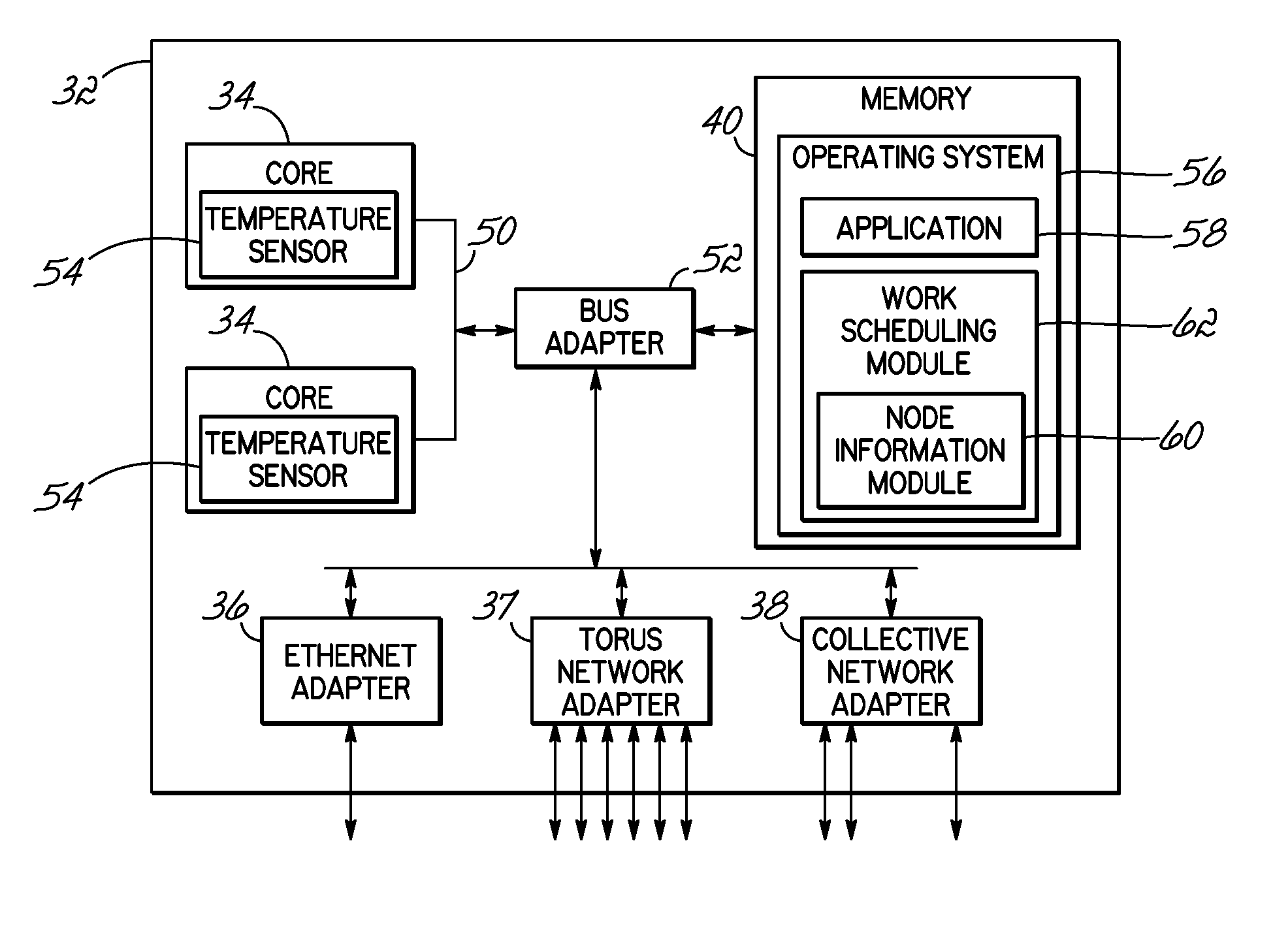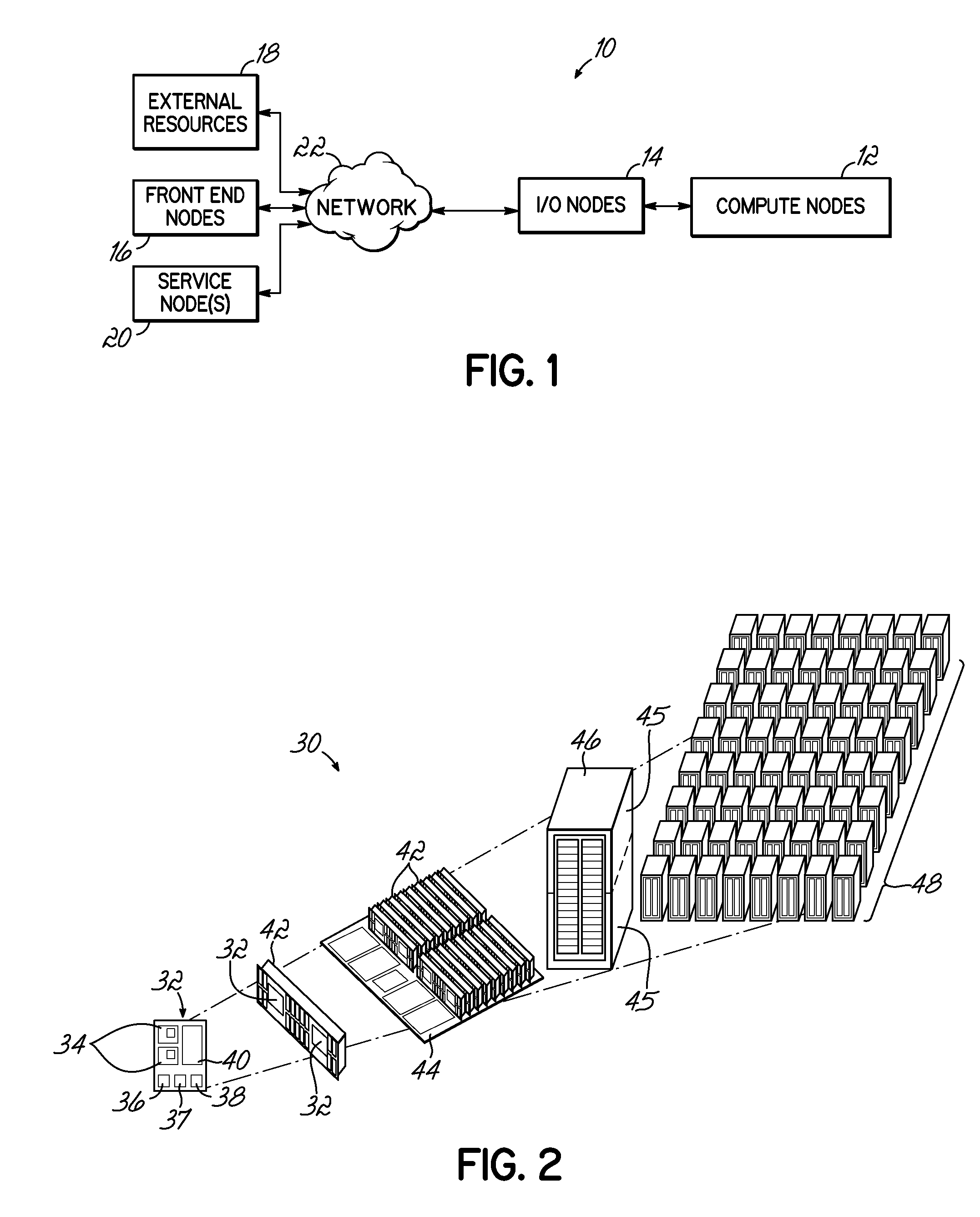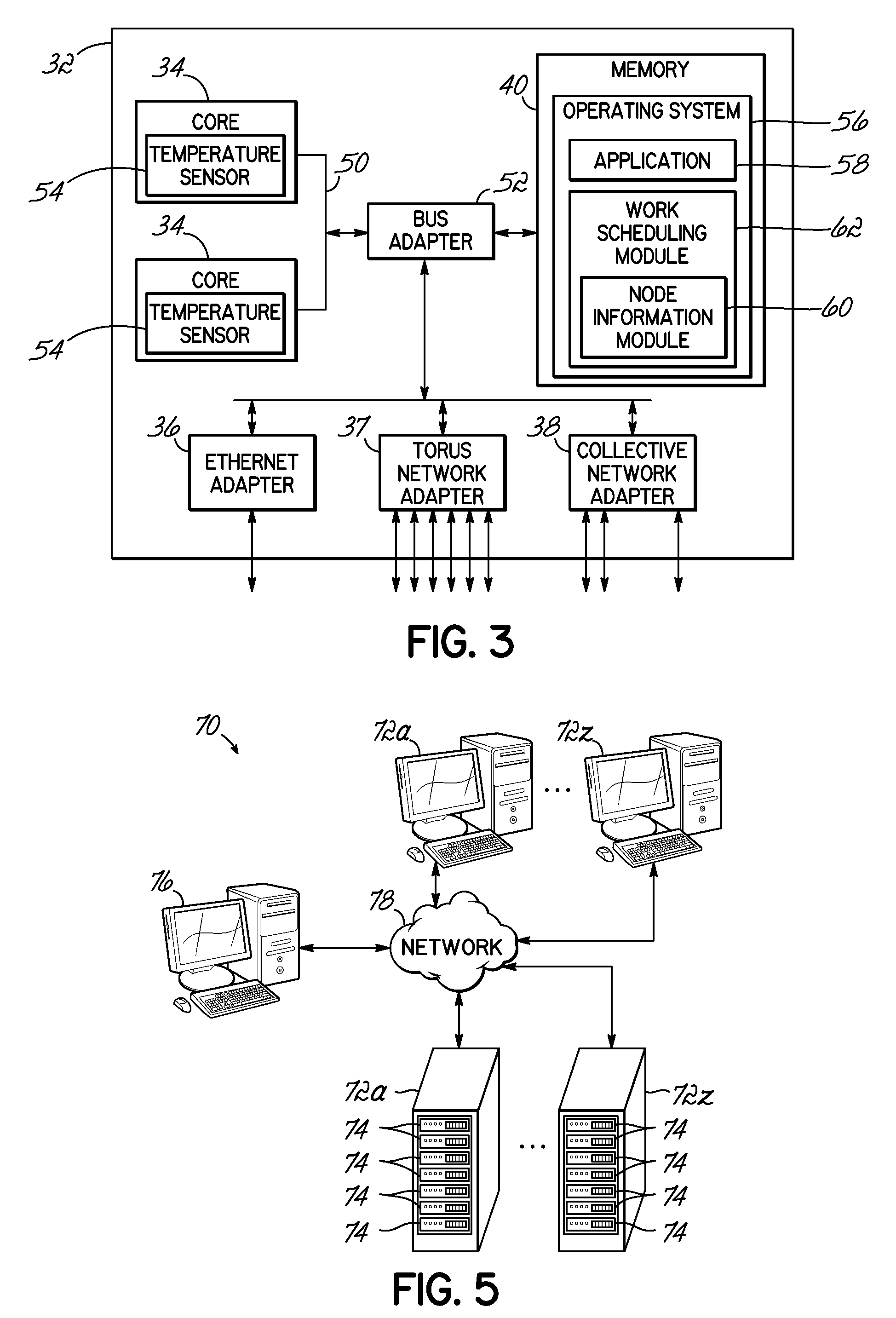Environment based node selection for work scheduling in a parallel computing system
a computing system and environment-based node technology, applied in the field of computing systems, can solve problems such as power consumption and heat generation
- Summary
- Abstract
- Description
- Claims
- Application Information
AI Technical Summary
Benefits of technology
Problems solved by technology
Method used
Image
Examples
example 1
[0076]By way of example, the system may include a plurality of nodes and receive a workload. In response to receiving the workload, the system may split the workload into a plurality of jobs, and in this example the system may split the workload into two jobs. The system may be configured to attempt to distribute the heat load of the system in a substantially uniform manner. Using information gathered about the data center, nodes, the system, and / or historic information, the system may determine that a there are two nodes that are not currently configured with a job. The system may also determine that both of the nodes are configured in the same data center and room, that both are at the same (x,y,z) location in the room, and that both are the same distance from a cooling source. Moreover, the system may determine that both nodes are plugged into the same power circuit, as well as that the first node has a high temperature and the second node has a low temperature. Additionally, the...
example 2
[0077]By way of further example, a system may include a plurality of nodes and receive a workload. In response to receiving the workload, the system may split the workload into a plurality of jobs, and in this example the system may split the workload into two jobs. The system may be configured to attempt to distribute the energy load of the system in a substantially uniform manner. Using information gathered about the data center, nodes, the system, and / or historic information, the system may determine that a there are two nodes that are not currently configured with a job, each of which is plugged into respective power circuits. The system may determine that a first power circuit is providing power up to half its full capacity as well as power to the first free node, while a second power circuit is providing power up to three-quarters of its capacity as well as power to the second free node. Furthermore, the system may determine that the first job draws a lot of power, while the s...
PUM
 Login to View More
Login to View More Abstract
Description
Claims
Application Information
 Login to View More
Login to View More - R&D
- Intellectual Property
- Life Sciences
- Materials
- Tech Scout
- Unparalleled Data Quality
- Higher Quality Content
- 60% Fewer Hallucinations
Browse by: Latest US Patents, China's latest patents, Technical Efficacy Thesaurus, Application Domain, Technology Topic, Popular Technical Reports.
© 2025 PatSnap. All rights reserved.Legal|Privacy policy|Modern Slavery Act Transparency Statement|Sitemap|About US| Contact US: help@patsnap.com



